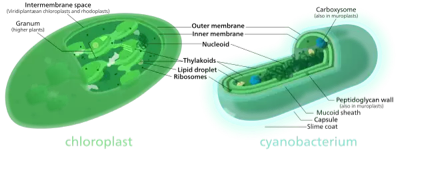Sign up for FlowVella
Sign up with FacebookAlready have an account? Sign in now
By registering you are agreeing to our
Terms of Service
Loading Flow


Still continued...

-Plastids are present in very different groups of protists, some of which are closely related to forms lacking plastids. This suggests that if chloroplasts originated de novo, they did so multiple times, in which case their close similarity to each other is difficult to explain.
-Many of these protists contain "primary" plastids that have not yet been acquired from other plastid-containing eukaryotes.
-Among eukaryotes that acquired their plastids directly from bacteria (known as Archaeplastida), the glaucophyte algae have chloroplasts that strongly resemble cyanobacteria. In particular, they have a peptidoglycan cell wall between the two membranes.
-If a cell's mitochondria or chloroplasts are removed, they do not have the means to create new ones.
